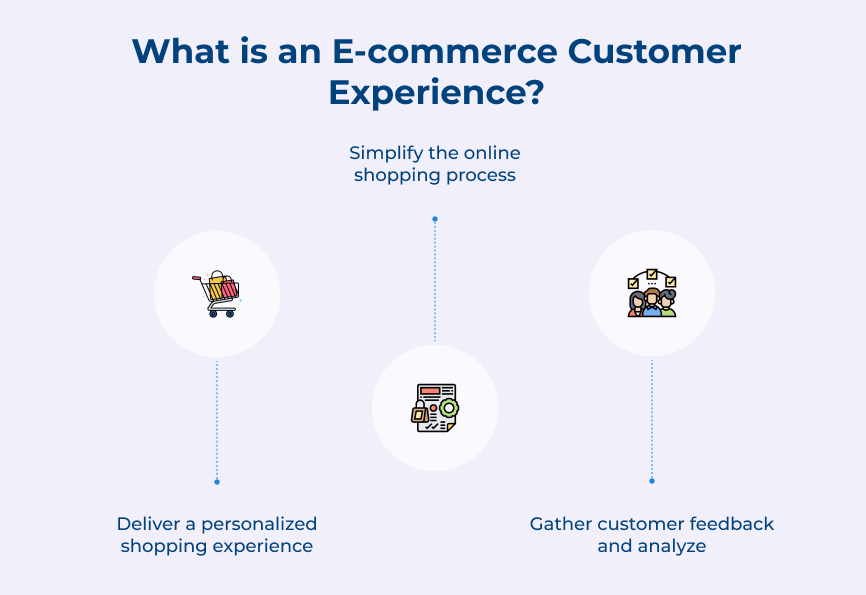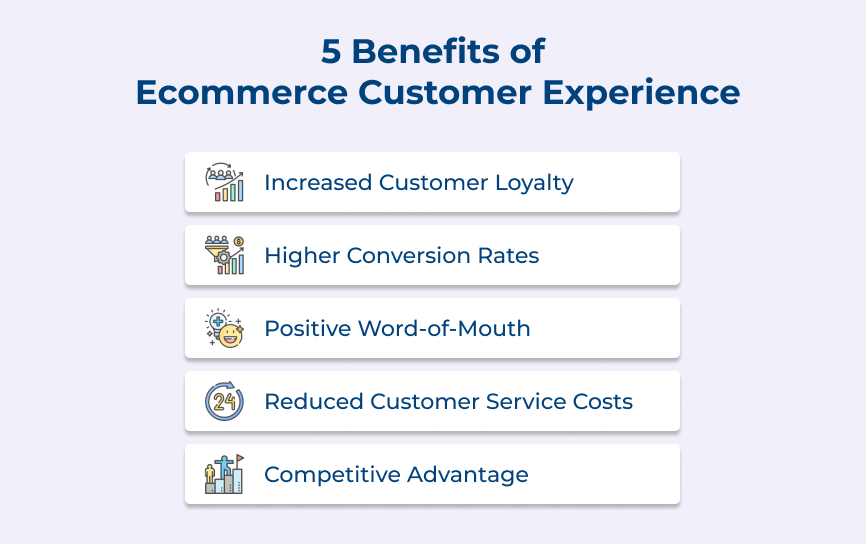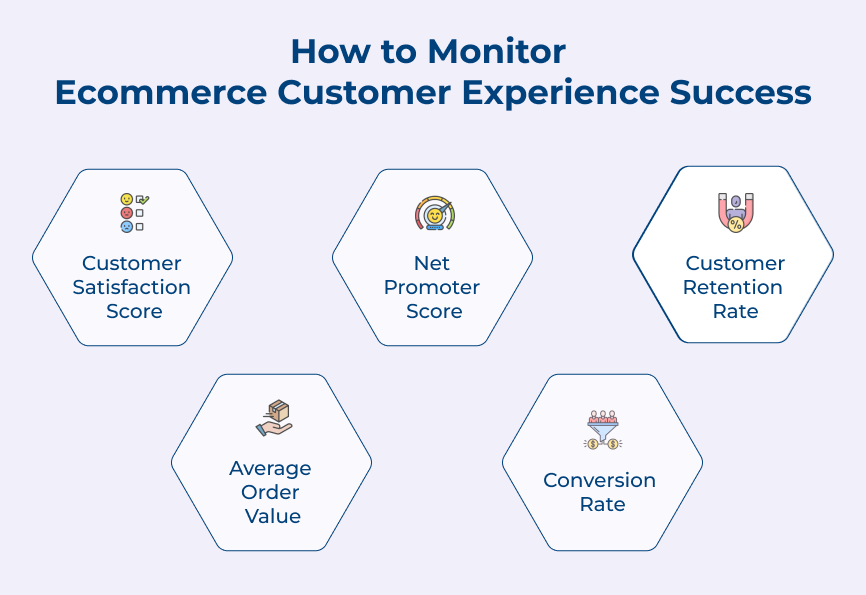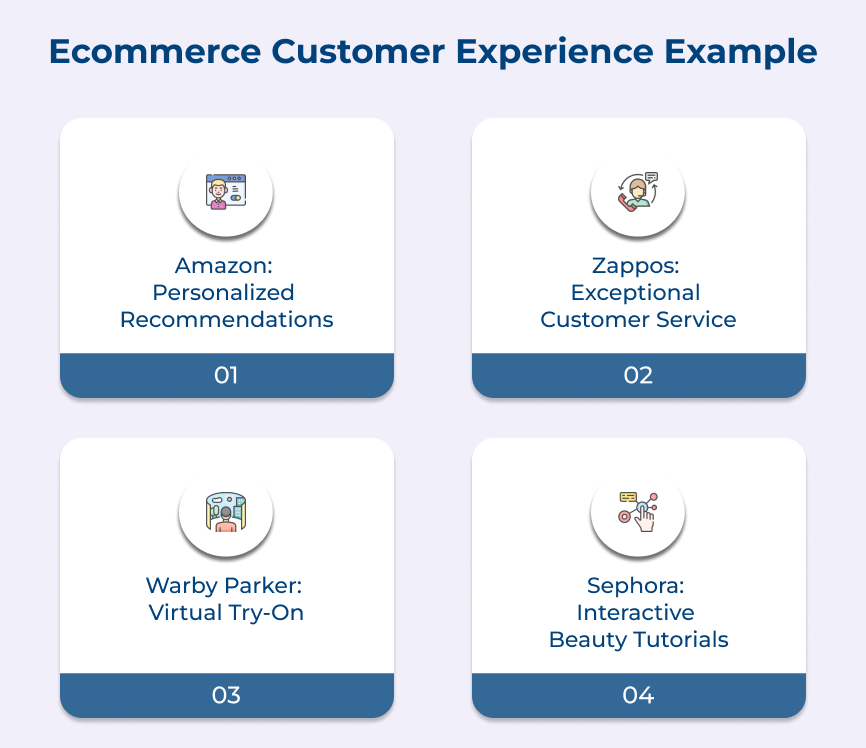1. Create Buyer Personas & Map Customer Journey
Creating buyer personas and mapping out customer journeys is an important aspect of improving the e-commerce experience. The two approaches allow businesses to understand their target audience better and provide a more relevant shopping experience.
The two approaches increase customer satisfaction by offering tailored solutions and improving the overall shopping experience. It can also lead to higher conversion rates and customer loyalty as customers feel understood as well as valued by the business.
Actionable Tips:
- Conduct customer research to identify your target audience and their needs.
- Develop detailed buyer personas based on the research, including demographic information, interests, shopping behavior and pain points.
- Map out customer journeys for each persona, identifying key touchpoints and opportunities for personalized messaging.
2. Implement an Omnichannel CX Strategy
Implementing an omnichannel customer experience (CX) strategy is crucial for e-commerce businesses whose customers demand a seamless and consistent experience across all channels. The strategy ensures that customers receive the same level of service and experience regardless of their interaction with the business through digital or offline channels.
An omnichannel CX strategy helps to improve e-commerce CX by offering customers convenience, personalization and a cohesive brand experience. It enables businesses to understand customers better through data analysis, leading to targeted messaging and offerings that meet customer expectations.
Actionable Tips:
- Ensure all channels the e-commerce company uses are integrated and compatible with each other.
- Use customer data to personalize messaging and offerings across all the channels.
- Offer multiple options for customer interactions, such as chatbots, phone support and social media channels.
3. Deliver Superior Customer Service
Delivering superior customer service is essential for any e-commerce business as it sets it apart from its competitors, promotes customer loyalty and drives sales growth. Providing excellent customer service goes beyond just resolving customer complaints and queries; it involves creating a positive customer experience at every touchpoint.
Actionable Tips:
- Offer various channels for customer support and make sure to provide swift response times to all inquiries.
- Provide proactive customer service by anticipating customer needs, such as personalized product recommendations or post-purchase follow-ups.
- Train customer support staff to be knowledgeable about the solutions and be empathetic to customer needs.
4. Make Your Website Design User-friendly
Creating a website with a user-friendly design is crucial for any e-commerce business due to the industry being fiercely competitive. A poorly designed website can often lead to frustration, confusion and ultimately, lost sales.
A user-friendly website will improve e-commerce CX by creating a positive online shopping experience for customers and facilitating their purchasing decisions. User-friendly design can increase customer satisfaction, reduce cart abandonment rate and enhance customer retention.
Here are three actionable tips for making your website design user-friendly:
- Simplify your website layout by using clear content, an uncluttered design and intuitive navigation.
- Optimize your website for mobile devices by ensuring that it is responsive and easy to navigate on smaller screens.
- Use high-quality graphics to showcase your products and create a visually appealing website.
5. Target Your Customers with the Right Messaging at the Right Time
Targeting customers with the right messaging at the right time is crucial in improving e-commerce CX. When customers receive personalized and relevant messages they are more likely to engage with your brand and make a purchase, which not only improves conversion rates but also builds trust.
When customers receive messages that are tailored to their preferences, needs and timing, it resonates on a different level. It shows that your brand understands and values their individuality. It can be anything from a well-timed email featuring products they’ve recently shown interest in or a push notification alerting them to an ongoing sale of items.
Actionable Tips:
- Utilize customer data to create targeted messaging that is relevant to people’s interests and past purchase history.
- Use marketing automation tools to send messages at the right time, such as after a customer adds an item to their cart or when they abandon their cart.
- Implement A/B testing to determine which messages are resonating with your audience and adjust accordingly.
6. Personalize Every Customer Interaction
Personalizing every customer interaction helps businesses improve e-commerce CX by building trust and establishing a relationship with customers. When customers receive personalized messages and offers that are tailored to their interests, they are more likely to make a purchase.
Personalization can also help e-commerce businesses stand out from the competition. It helps them create a differentiated customer experience that keeps customers coming back for more. It is more important than before for e-commerce brands to differentiate themselves from their competitors.
Actionable Tips:
- Use customer data to provide personalized product recommendations and offers based on past purchase history/searches.
- Implement dynamic content that personalizes the website experience based on customer behavior on the site.
- Use retargeting ads to personalize messaging and offers based on past interactions with the brand.
7. Use the Right CX Platform for Your ECommerce Business
Using the right customer experience platform is crucial for any e-commerce business. It directly impacts the overall customer experience and has a significant impact on sales/customer loyalty. The approach helps you to understand customer behavior and preferences while streamlining communication channels to improve customer interactions.
A good CX platform helps you understand what your customers like and do. The insights serve as a secret weapon that lets the business offer its customers exactly what they want. It makes interacting with customers easy and smooth.
Actionable Tips:
- Choose a CX platform that integrates seamlessly with the e-commerce platform to gather and analyze customer data.
- Set up chatbots or AI-powered customer service tools to provide quick, accurate and personalized responses.
- Use analytics tools within the CX platform to gain deeper insights about customer behavior and preferences that can be used to enhance the overall customer experience.
8. Make a Frictionless Checkout Process
A frictionless checkout process helps improve e-commerce CX by reducing the amount of effort customers need to make to complete their purchases. A streamlined checkout process with minimal steps and simplified forms can prevent frustration.
The better the checkout process is, the higher customer satisfaction your customers will have. It can reduce the likelihood of errors during payment and shipping. Businesses can easily improve their overall shopper experience.
Actionable Tips:
- Implement an auto-fill feature that automatically populates customer information, making the checkout process quicker and easier.
- Offer multiple payment options, such as credit card, PayPal or Apple Pay, to provide customers with flexibility and ease during the checkout process.
- Provide customers with the option to save their payment and shipping information for future purchases.
9. Gain Insights from Customer Data & Feedback
Gaining insights from customer data and feedback is crucial for any e-commerce business to improve its customer experience (CX). It helps businesses identify pain points and areas where customers are having a bad experience, leading to cart abandonment or negative reviews.
Incorporating data-driven insights and actively seeking customer feedback enables e-commerce businesses to evolve their strategies. Create a seamless shopping journey that increases customer retention, positive reviews and sustains growth in a competitive market.
Actionable Tips:
- Collect customer feedback through surveys or reviews to understand their pain points and areas for improvement in the e-commerce process.
- Use analytics tools like Google Analytics to monitor website behavior and understand how customers interact with your site.
- Utilize personalization tools like AI-based recommendation engines to provide personalized experiences for customers based on their behavior and browsing history.
10. Leverage Social Proof to Improve Conversions
Social proofs are powerful tools that can help e-commerce businesses improve their conversion rates and overall customer experience. Social proof is evidence that others have made a purchase, reviewed a product, or interacted with a brand positively. It works to influence potential customers to follow suit.
Leveraging social proof allows e-commerce businesses to establish greater trust and credibility with their potential customers. It leads to increased customer satisfaction, loyalty and ultimately, more conversions.
Actionable Tips:
- Display customer reviews prominently on your website and incentivize customers to leave reviews by offering discounts or other promotions.
- Integrate social media feed widgets that showcase user-generated content across your website and other digital channels to highlight the enthusiasm of your customers.
- Use email marketing campaigns to promote customer reviews and success stories to your existing subscribers.
How to Monitor Ecommerce Customer Experience Success
Check out the key metrics businesses must monitor to analyze their eCommerce customer experience success, helping you build a more effective strategy that promotes lasting loyalty.
















